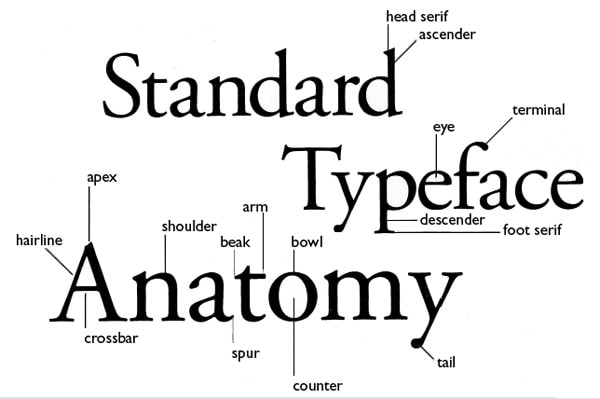
In a similar vein, typefaces that are lighter in weight (i.e., have thinner strokes) are perceived as delicate, gentle, and feminine, whilst heavier fonts (with thicker strokes) are perceived as strong, aggressive, and masculine, and even adding longer ascenders and descenders to different typefaces can transform the print personality perceived ( Sassoon, 1993). , for example, is described as no-nonsense and restrained, whereas is modern and cool ( Spiekermann and Ginger, 1993). On the other hand, sans serif fonts elicit fewer attributes generally, but they are nonetheless still perceived as having distinct personalities. Serif typefaces, for example, include, which is typically described as reliable and bookish,, which is described as graceful, refined, and feminine, and, which is described as serious but friendly, whereas is podgy, jolly and without pretension ( Secrest, 1947), and the family of type is dramatic, sophisticated and urbane ( Sushan and Wright, 1989). Whether or not a typeface has a serif also affects the number of affective characteristics ascribed to it, with serif typefaces eliciting more emotion-laden adjectives than sans serif typefaces ( Tantillo et al., 1995). In addition, Parker (1997) proposed that typefaces with rounded serifs are perceived as friendly and open whilst typefaces with square serifs are perceived as formal and proper. Sushan and Wright (1989), for example, claim that each typeface has a discrete personality and can be characterized in many ways, including confident, elegant, casual, bold, romantic, friendly, nostalgic, modern, delicate, and sassy, with as many potential personalities as there are actual typefaces.

Indeed, several reports have argued that the visual attributes of written words have a subtle influence on perception extending beyond matters of legibility (e.g., Kostelnick, 1990 Brumberger, 2003 Mackiewicz, 2004). Over time, this capacity for typefaces to elicit feelings in readers has been referred to variously as atmosphere value ( Poffenberger and Franken, 1923), congeniality ( Zachrisson, 1965), semantic quality ( Bartram, 1982), topographical allusion ( Lewis and Walker, 1989), personality ( Striver, 2001), and rhetorical effects ( Mackiewicz and Moeller, 2004). Previous research has revealed that different typefaces are often perceived as having visible personality traits (which we call print personalities) with the ability to convey semantic information beyond the meaning provided linguistically by the words themselves. Some of the implications of these results for the processes involved in reading are discussed. The results showed that each typeface produced a different pattern of ratings of personality characteristics and suggest that, like English, Arabic typefaces are perceived as having distinct print personalities. Eleven different typefaces were presented in Arabic sentences to skilled readers of Arabic and participants rated each typeface according to 20 different personality characteristics. Accordingly, the purpose of the present study was to investigate whether, like English, different Arabic typefaces inspire the attribution of print personalities. In addition, spaces between letters seldom exist in Arabic and the visual appearance of even the same letters can vary considerably within the same typeface depending on their contextual location within a word. In particular, apart from being read from right to left, Arabic is formed in a cursive script in which the visual appearance of letters contrasts strongly with those used for Latinate languages. But not all written languages are Latinate languages, and one language that is especially visually distinct is Arabic.

However, research in this area has previously been conducted using only English stimuli and so it may be that typefaces in English, and other languages using the Latinate alphabet, lend themselves unusually well to eliciting perception of print personalities, and the phenomenon is not a language universal. Previous research suggests that different typefaces can be perceived as having distinct personality characteristics (such as strength, elegance, friendliness, romance, and humor) and that these “print personalities” elicit information in the reader that is in addition to the meaning conveyed linguistically by words.



 0 kommentar(er)
0 kommentar(er)
